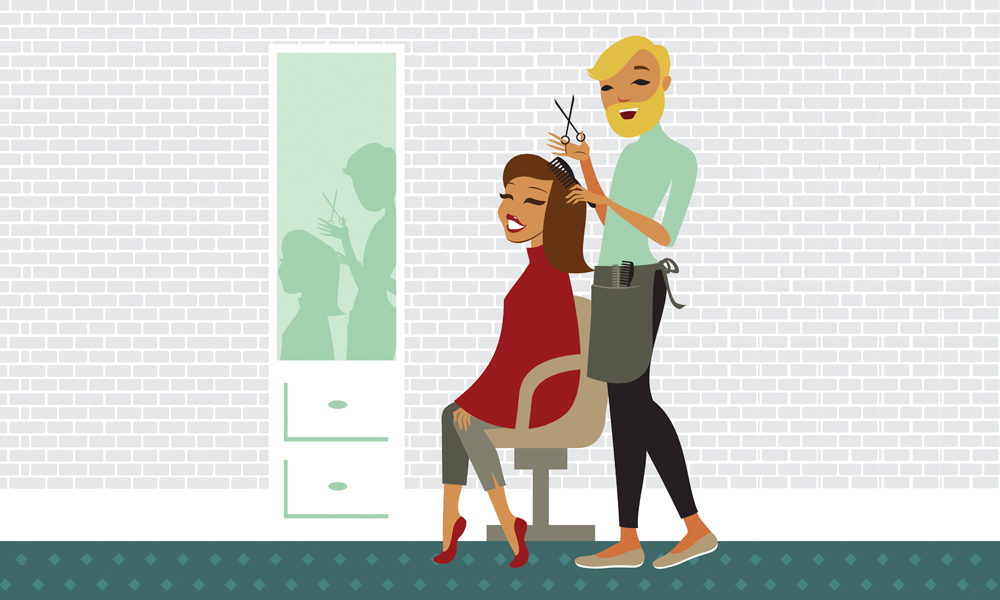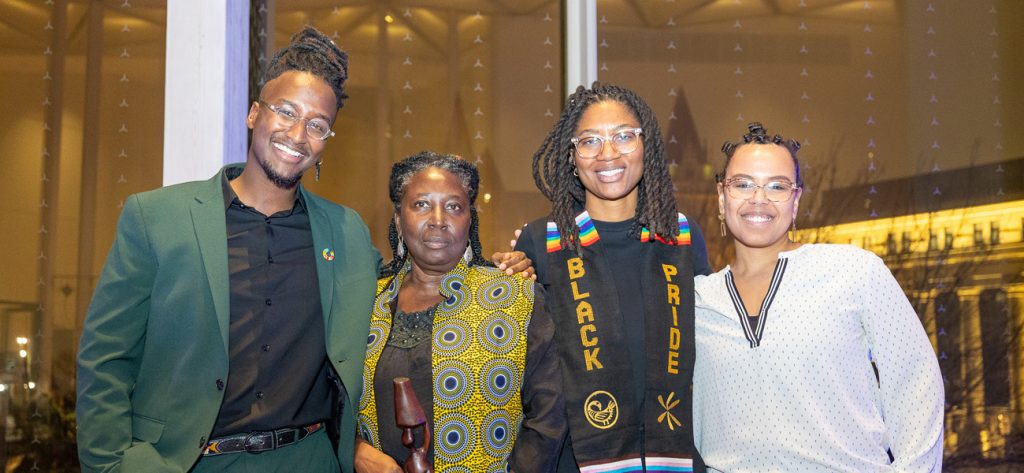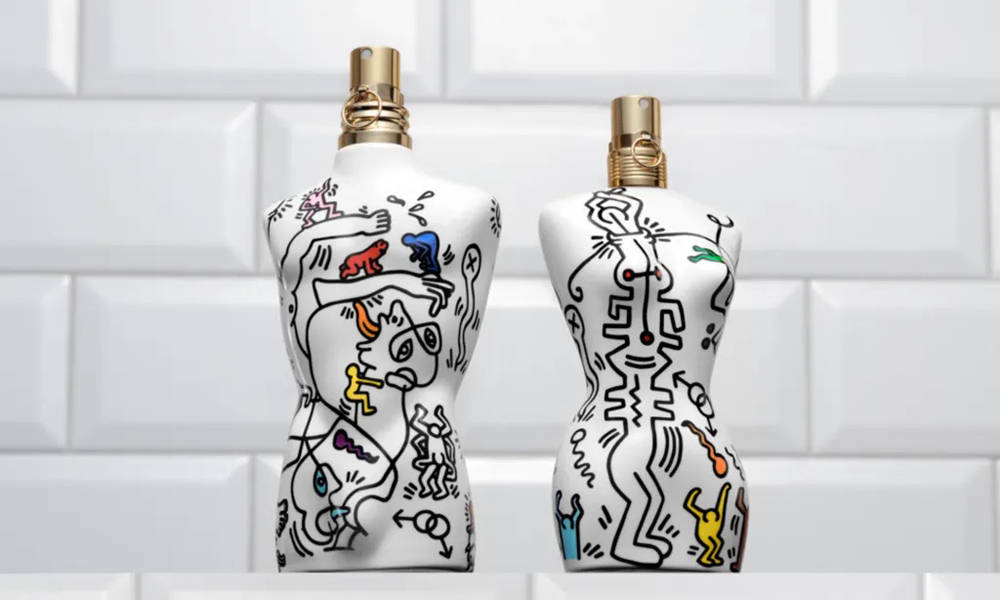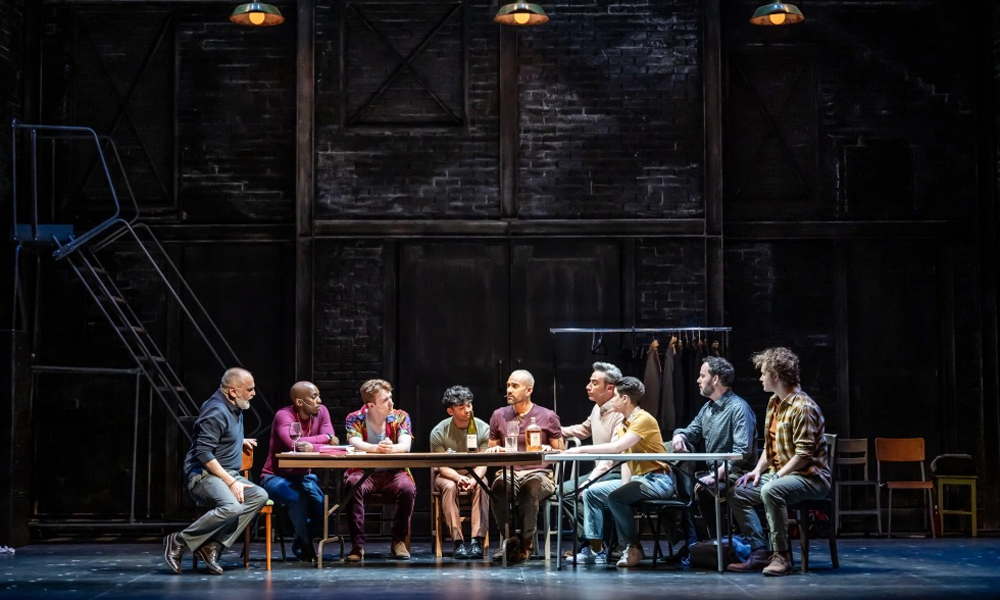Unpacking the allure, the stereotype and the magnetism…
By Adriana Ermter
“I think that the most important thing a woman can have – next to talent, of course – is her hairdresser.” —Joan Crawford
For Crawford, that stylist was Sydney Guilaroff, MGM’s chief hairdresser.
If rumour is gospel, in the early 1930s Crawford plucked Guilaroff from a chi-chi salon in New York City and deposited him in Hollywood, where she’d secured his gig at the behemoth studio. Crawford was under contract with MGM at the time and believed only a male hairstylist, particularly one who was gay, knew how to make her look desirable to men. Guilaroff didn’t disappoint: not Crawford, nor the other MGM starlets, including Claudette Colbert, Lucille Ball and Judy Garland. He defined each of them with their signature styles of baby-doll bangs, fire-engine red waves and Wizard of Oz braids, respectively.
Crawford eventually left MGM for Warner Bros. (where she won an Oscar for her performance in Mildred Pierce), but her respect for Guilaroff’s magic touch never wavered. She became renowned for saying, “If you’re going to be a star, you have to look like a star, and I never go out unless I look like Joan Crawford the movie star. If you want to see the girl next door, go next door.” At Guilaroff’s hands, Crawford always looked the part.
Despite her sentiments, however, the girl-next-door style became a coveted look. Its appeal started in the ’70s with Christie Brinkley’s long and loose strands, and was cemented in 1993 via Jennifer Aniston’s character Rachel on Friends. The now-iconic “Rachel” coif is credited to Chris McMillan, Aniston’s long-time hairstylist.
It seems Aniston shares the same sensibility about hairstylists as Crawford. At the 2018 InStyle Awards, Aniston called McMillan her “dearest friend,” her “brother from another mother” and the “husband who will never marry me because he’s gay,” before presenting him with the Hairstylist of the Year Award on stage. Currently, the two can be seen posing, coifing and hugging in tiny little squares on their Instagram pages. Of course, Aniston’s hair is flawless with never a hair out of place.
Celebrities aren’t the only ones angling to align themselves with their mane men or vocalize their ideal that the gay male stylist stands a head above other cutters and colourists. According to the US Professional Beauty Association, 88 per cent of women believe that all gay hairstylists better understand women and are more creative than your average person and, if the woman is lucky, will become their deeply rooted confidant. Some women even hope their relationship with their hairstylist will rival connections with their friends and/or their significant others. Odd, to be sure, and yet, considering the safety net of having a gay male hairstylist as confidant, coupled with their creative abilities, this theory is not a surprise.
“The hair salon is the place women go to talk freely to each other and to their hairstylists about things they may not say in other public places or around their husbands,” affirms Tyana Nichole, a portfolio artist with L’Oréal Professionnel’s Canadian artistic team and a hairstylist, colour expert and makeup artist at Brush Salon in Vancouver. “I am a transgender woman and started my career before my transition, so I experienced this belief. I’m not sure I would say that gay men can cut, colour and style women better than anyone else, but I do think that LGBTQ people have a special gift. People who have endured a world of oppression seem to manifest that destructive energy into something creative.”
An explosion of creativity
For decades this creative energy has been channelled into hair. While the ’20s pin curls and the ’30s cropped bangs are certainly noteworthy, the art of hairstyling gained real momentum in the ’50s with high-profile stylists like Kenneth Battelle and his A-list clients. Battelle not only created Jacqueline Kennedy’s bouffant, “he also cut it off and into Jackie’s famous bobbed style the day before she went to Dallas and the president was shot,” says Martin Hillier, the Canadian national art director for Electric London and co-owner of The Lounge Hair Studio in Vancouver. “He also did Marilyn Monroe’s hairdo the night of JFK’s birthday party, when she sang ‘Happy Birthday Mr. President.’” It was the ’60s.
With the ’60s came the counterculture revolution’s new social norms and a desire for change, individuality and self-expression, complete with how women wore their hair courtesy of the stylists standing behind their chairs. Embracing creativity with a new and untethered abandon, these stylists replaced conservative poodle cuts, pompadours and bouffants as fast as Vidal Sassoon could pump out short cuts with sharp edges and clean lines. The hair salon may have been a haven for its clientele, but it was transforming into a safe space for gay stylists to express themselves freely.
“In my early salon experiences, there were more non-gay people working as hairstylists than gay,” says Justin German, a consulting stylist for Pantene and the co-owner of Bang Salon in Toronto. German, with 30 years spent wielding scissors, credits the hair salon with being “the first work environment where I felt completely safe to be who I am.”
Thanks in part to the courage of openly gay hair legends of the ’80s and ’90s, such as
Christiaan Houtenbos (legendary stylist to Blondie’s Debbie Harry and Grace Jones) and Oribe Canales (legendary stylist to Naomi Campbell, Christy Turlington and Cindy Crawford), a new level of acceptance and normalcy was fuelled within the salon structure. It became inclusive, woke, and a celebration of all hairstylists on the basis of their talent rather than their sexual orientation.
“The early ’90s was one of the first moments that being gay was celebrated,” affirms German. “I was working on Yonge Street at the first Civello [hair salon] and I met a lot of incredible queer people. I was introduced to a music scene and a fashion scene that was thriving and absolutely electrifying. I made instant connections with creative people that I still work with and keep in touch with to this day. It was a community of people who collaborated with each other and elevated each other.”
Recognition for a blossoming industry
This positive impact has strengthened in recent years, encouraging younger generations to enter the professional beauty industry. According to a report by Industry Canada, there are 15,635 beauty salons across Canada, including Yukon, the Northwest Territories and Nova Scotia. In addition, the Canadian Cosmetic Toiletry and Fragrance Association (CCTFA) reports that beauty in Canada is a $9.5 billion a year industry, growing by 0.7 per cent a year with ample room for opportunity, especially in Quebec, Ontario and British Columbia, where populations are higher.
“I am absolutely blessed to be involved in such an incredible industry and to be able to work safely, support myself and create a wonderful life where I am free and welcome and celebrated,” says Nichole. “The beauty industry as a whole deserves applause for being a home for individuals who just want to express themselves, be themselves and celebrate together no matter what race, age or gender.”
Public awards – such as the Emmy’s Outstanding Hairstyling for a Series, the Oscar’s Best Makeup and Hairstyling category and the American Professional Beauty Association’s North American Hairstyling competition and awards ceremony – have helped further this sense of recognition and community. These awards, along with hair-based magazines like Canada’s Salon Magazine and Canadian Hairdresser, have been pivotal in educating public perception of gay male and female stylists’ worth by reinforcing their value through published photographs and interviews crediting their cuts, colour and influence.
“Good hair is about your talent and your creativity,” says German. “Your sexual orientation has nothing to do with success or failure in the hair industry.To say gay people are more creative than the average person is a generalization that is simply not true. I am a gay black male and, personally, my path has been filled with people who have been exceptionally supportive. For creativity to flourish, we need all kinds of people to be involved in the hair industry, bringing different perspectives and their full imagination to hair, style and artistry.”
Giving Crawford’s statement an updated and inclusive spin, the phrase could now be interpreted as “Life is more beautiful once you meet the right hairstylist.”
—
ADRIANA ERMTER is a Toronto-based, lifestyle-magazine pro who has travelled the globe writing about must-spritz fragrances, child poverty, beauty and grooming.







POST A COMMENT